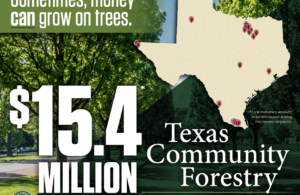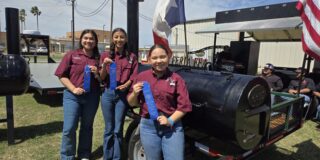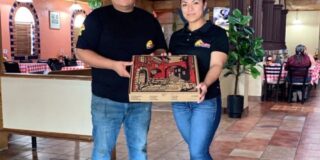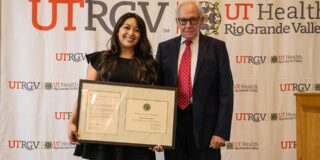- La Feria Native Soon To Retire From The Military This Summer
- Senior Eneece Avila Takes Pride in her State Title
- Dr. Noemi Infante, Harlingen Medical Center Open New Women’s Clinic
- Santa Rosa Cameron County Park Partially Reopens
- Santa Rosa Takes to Regionals Meet in Kingsville, Tx
- Long-Standing Nexstar Tower in La Feria Decommissioned
- Lionettes Powerlifting Meet
- Local Business Holds Event to Benefit RGV Shriners Club
- Knights of Columbus Holds it’s 30th Annual Golf Tournament
- KGBT Tower Dismantled
Famous Canadian Crocodile Lays 36 Eggs at Gladys Porter Zoo
- Updated: March 17, 2017
The Herpetarium staff at the Gladys Porter Zoo is thrilled to announce that the Zoo’s female Orinoco crocodile, Suede, has laid 36 eggs! On Tuesday, February 28 at 7:30 am, Suede began laying her eggs in a sand pit she had excavated in her exhibit. Four hours later, she gently covered her nest with sand. Shortly thereafter, she voluntarily went into her barn, making it possible for keeper staff to safely separate her from the eggs she would normally guard for several months.
The nest was excavated by keepers, and all but a few eggs were brought back to the Herpetarium. There, they were split up into two different groups for incubation. The larger portion of eggs are being kept at a higher temperature which has been proven to produce male hatchlings. If the eggs develop successfully, baby Orinoco crocodiles will emerge after about 90 days.
In the meantime, Suede is vigilantly watching over her nest on exhibit.
Suede and her mate, Blade, were exported from their native Venezuela in the late 1980s as hatchlings and vigilantly reared to adulthood by Karel Fortyn in Welland, Canada. When Fortyn passed away unexpectedly in the spring of 2011, a myriad of logistical, interpersonal and legal issues clouded the future of the two large, critically endangered crocodiles. After months of planning and negotiations, Blade and Suede made a historic 2,000 mile road trip from Canada to Brownsville, Texas later that year. Thanks to the teamwork and tenacity of crocodile enthusiasts on both sides of the U.S./Canada border, the pair stepped into the sunshine for their first time in October 2011 at Gladys Porter Zoo. A single hatchling was produced in 2016.
Orinoco crocodiles are native to Venezuela and Colombia, South America. Due to extensive exploitation for their hides, they are the most endangered New World crocodilian, suffering a population decline of over 80 percent within the last three generations. The species is listed by the IUCN as Critically Endangered and is in serious peril throughout its range. In the early 1990s, fewer than 1,500 non-hatchlings survived in the wild. Some estimate that the wild population may have been as low as 250 adults. Despite proactive conservation measures, declines and fragmentation of the population continues.
For updates on how the eggs are doing, please check the Gladys Porter Zoo’s Facebook page.








